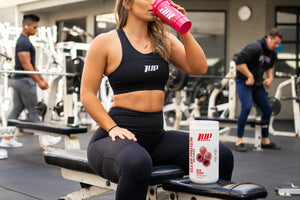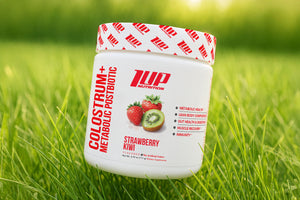Breathing is one of those rare biological processes that happens both consciously and unconsciously, meaning we have the ability to control it if we really concentrate. And, the results can be rather astounding when you practice regular breathing exercises, including stress reduction, lower heart rate, increased concentration, and heightened mood!
In addition to being done consciously or unconsciously, breathing can also happen in two different ways -- through the nose or through the mouth.
Is one way of breathing superior to the other? After all, we’ve all heard of the term “mouth breather” which is usually attributed to an individual who is rather brutish and unintelligent. But, does this also mean that breathing through the mouth isn’t as beneficial or healthy as nose breathing?
Let’s discuss.
Benefits of Nose Breathing
There are three main reasons (benefits) why you may want to consider nose breathing:
- Cleaner air: As unsexy of a thing as they may be, nose hairs provide a powerful filter that removes allergens, dust, and pollen, which helps prevent them from entering your lungs.
- Natural humidifier: Your nose warms and moisturizes the air you breathe in, making it easier for your body to utilize.
- Generates nitric oxide (NO): Breathing through your nose stimulates NO production. As you may remember from our discussions about Citrulline and Nitrosigine (two supplements in 1UP Pre that boost NO, nitric oxide is a vasodilator that helps to widen blood vessels, thereby improving blood flow, oxygen, and nutrient delivery throughout your body.
Sometimes Mouth Breathing is Necessary/Unavoidable
When you’re congested, nose breathing is difficult, even when using a decongestant or nasal spray. In these instances, mouth breathing makes it easier to get in the necessary amount of air and oxygen to keep your cells nourished and energized.
Keep in mind, though, that mouth breathing reduces the filtration and humification benefits associated with nose breathing. As a result, you may be at an increased risk of:
- Breathing in dirtier, dryer air
- Bad breath
- Gum inflammation
Nose Breathing or Mouth Breathing for Better Workouts & Results
As intensity ramps up during a workout, most of us start breathing through the mouth. This is due to a couple of factors, including increased respiratory rate and greater airflow resistance in the nose (due to inhaling more frequently each minute). So, what does this mean for exercise performance?
Well, there is not a plethora of research on the subject of nose breathing vs mouth breathing and exercise. However, there are a couple of studies.
A 2017 study found nose breathing led to a lower respiratory rate during exercise; however it may also increase cardiovascular stress. Researchers concluded the paper stating that an athlete’s particular breathing technique doesn’t affect their performance, and how an athlete breathes should be their preference.[1]
Another crossover trial involving 10 runners had them do the same treadmill workout twice -- once with nose breathing and once with mouth breathing. Researchers noted similar amounts of oxygen consumption from nose breathing as mouth breathing. However, the runners’ number of breaths per minute (“respiratory rate”) was lower when using nose breathing. This means it took less work to consume the same amount of oxygen with nose breathing, which could potentially improve athletic performance and endurance.[2]
A recent 2022 evidence-based review on “breath tools'' for performance enhancement stated that nose breathing may help reduce the rate of perceived exertion (RPE) and increase time-to-exhaustion (TTE).[3] However, the researchers also note that it will take time to transition from being a predominant mouth breather during intense exercise to a nose breathing (...“10–12 weeks are required for meaningful changes in nasal breathing comfort and relief of airway restriction to occur…”).[3]
How to Practice Nose Breathing
If you’re looking to improve your breath work, here are some easy drills and exercises to try:
Easy Breathing
Find a comfortable place to sit (your favorite chair, sofa, bench, etc), close your eyes and mouth. Now, start breathing in and out through your nose as gently as possible. Make sure to take slow, deep belly breaths, no shallow “chest” breaths. As this becomes more comfortable, you can progress to some of the more “interesting” breathing exercises.
Alternate Nostril Breathing
Here, you inhale through one nostril and exhale through the other, using your finger to close the opposite nostril. The breathing exercise requires concentration, which helps promote mindfulness and relaxation.
Here are the steps to perform alternate nostril breathing:
- Find a comfortable place to sit
- Sit up tall and relax your shoulders.
- Place your left thumb on your left nostril and then Inhale through your right nostril.
- Place your thumb on your right nostril and then exhale through your left nostril.
- Keeping your thumb in place, inhale through your left nostril.
- Now cover your left nostril and exhale through your right nostril.
- That’s one set. Repeat for 3-5 minutes.
Walking and Nose Breathing
Walking is a massively underrated form of cardio. It’s low intensity enough to promote fat burning as well as a great way for you to learn how to make nose breathing your default breathing pattern for exercise.
Here’s how to do it:
- Stand up tall (shoulders back and down, proud chest, pelvis engaged, take a normal breath in through your nose.
- Exhaling slowly, start walking forward.
- Keep track of how many steps you can take before feeling the need to inhale.
- Repeat, trying to get a couple steps before taking your next breath
Takeaway
Nose breathing offers more benefits than mouth breathing by helping to filter out dust, pollen, and other allergens, humidifying the air, and increasing oxygen uptake. Use the tips outlined above to start improving your breathing technique and experience the myriad benefits of nose breathing!
References
- Recinto C, Efthemeou T, Boffelli PT, Navalta JW. Effects of Nasal or Oral Breathing on Anaerobic Power Output and Metabolic Responses. Int J Exerc Sci. 2017 Jul 1;10(4):506-514. PMID: 28674596; PMCID: PMC5466403.
- Dallam, George M. et al. “Effect of Nasal Versus Oral Breathing on Vo2max and Physiological Economy in Recreational Runners Following an Extended Period Spent Using Nasally Restricted Breathing.” International Journal of Kinesiology and Sports Science 6 (2018): 22-29.
- Harbour E, Stöggl T, Schwameder H, Finkenzeller T. Breath Tools: A Synthesis of Evidence-Based Breathing Strategies to Enhance Human Running. Front Physiol. 2022 Mar 17;13:813243. doi: 10.3389/fphys.2022.813243. PMID: 35370762; PMCID: PMC8967998.






